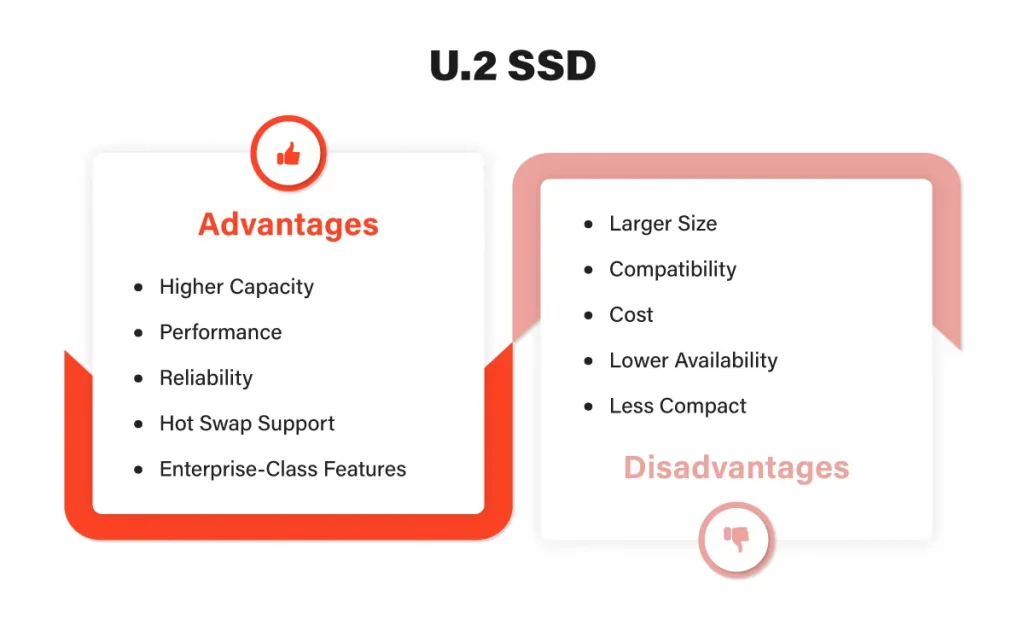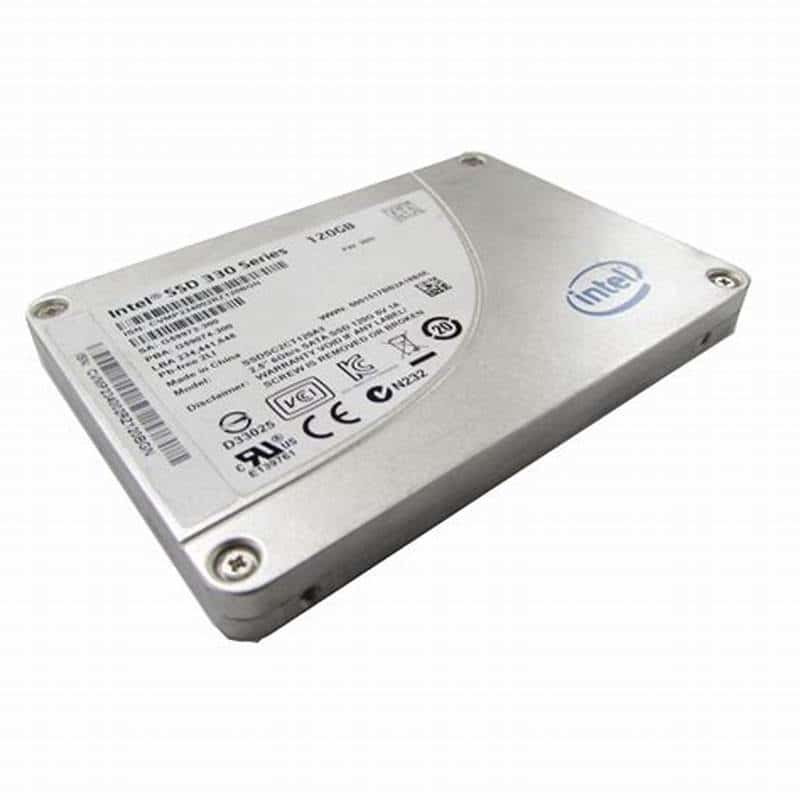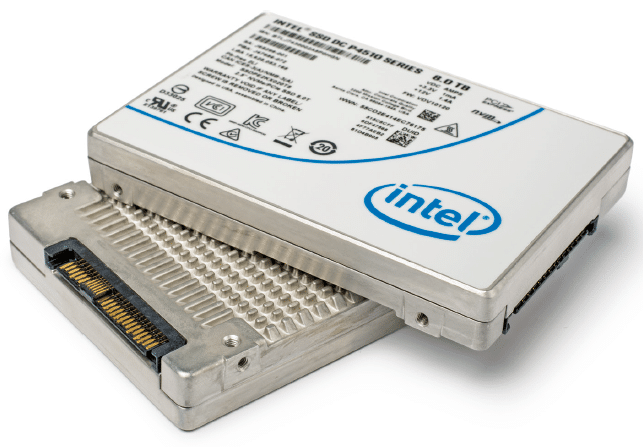In the ever-evolving landscape of storage technology, Solid State Drives (SSDs) have emerged as the game-changer, offering superior speed, reliability, and efficiency compared to traditional hard drives. Among the various SSD form factors, U.2 has captured attention for its remarkable performance and versatility. In this blog post, we will delve into the world of U.2 SSDs, exploring their features, benefits, and how they connect to the larger storage ecosystem.
Understanding SAS and SATA SSDs
Before diving into U.2 SSDs, it is essential to grasp the basics of SAS (Serial Attached SCSI) and SATA SSDs, which were among the early adopters of SSD technology. Both interfaces have been widely used in enterprise and consumer applications. SATA SSDs are more common in consumer-grade systems due to their affordability and compatibility with existing SATA interfaces, while SAS SSDs cater to enterprise environments that require higher performance, reliability, and scalability.
The Emergence of NVMe SSDs
As SSD technology progressed, the introduction of the NVMe (Non-Volatile Memory Express) interface revolutionized the storage industry. NVMe SSDs leverage the PCIe (Peripheral Component Interconnect Express) protocol, offering significantly higher data transfer rates, lower latency, and improved IOPS (Input/Output Operations Per Second). NVMe quickly became the preferred interface for high-performance storage solutions in data centres, gaming PCs, and enthusiast systems.
Introducing U.2 SSDs
U.2 SSDs, also known as SFF-8639 or SFF-8639 U.2, bridge the gap between the SATA/SAS and NVMe worlds. U.2 SSDs utilize the NVMe protocol while maintaining a familiar 2.5-inch form factor, similar to traditional SATA drives. This form factor allows for straightforward integration into existing systems, making it an attractive option for those looking to upgrade their storage infrastructure without replacing the entire setup.

How U.2 SSDs Work
The U.2 form factor working group, responsible for developing and standardizing U.2 specifications, ensured seamless compatibility between U.2 SSDs and existing infrastructure.

The U.2 connector features four PCIe lanes and a separate SATA power and data connector.
This configuration enables the SSD to communicate with the system through NVMe and receive power through the SATA connector.
Such an arrangement is especially beneficial for users who have available SATA power but lack M.2 slots or PCIe lanes to accommodate NVMe drives.
The Advantages of U.2 SSDs
Performance
U.2 SSDs inherit the blazing-fast performance of NVMe technology, delivering exceptional read and write speeds. With lower latency and higher IOPS, U.2 SSDs excel in handling intensive workloads and multi-tasking scenarios.
Compatibility
Unlike M.2 drives, which require specific slots and can be limited by certain form factors, U.2 SSDs can be integrated into standard 2.5-inch drive bays, making them more versatile and accessible for a broader range of systems.
Hot-Swap Capability
U.2 SSDs are hot-swappable, allowing for easy installation and removal without powering down the entire system. This feature is particularly advantageous in enterprise environments where drive maintenance and replacements are routine.
Reliability
Leveraging NVMe technology, U.2 SSDs have no moving parts, reducing the risk of mechanical failure and ensuring data integrity and long-term reliability.
Scalability
U.2 SSDs cater to both enterprise and consumer markets, offering a range of storage capacities suitable for various applications. From small-capacity drives for home users to massive SSDs for data centers, U.2 covers it all.
Connecting U.2 SSDs
Connecting a U.2 SSD requires a motherboard or server with U.2 connectors or U.2 to PCIe/NVMe adapters. Additionally, the system must support NVMe through PCIe lanes. The power and data connectors are separate, with power supplied through the standard SATA power connector.
Once connected, the U.2 SSD should be recognized by the system, and the user can proceed with the installation and data transfer process. The U.2 SSD has emerged as a compelling storage solution, combining the performance advantages of NVMe with the familiar 2.5-inch form factor.
With its seamless compatibility, hot-swap capability, and reliability, U.2 SSDs have found their place in both consumer and enterprise markets.
As the storage industry continues to evolve, the U.2 form factor working group, along with advancements in NVMe technology, will likely bring further improvements and innovations to SSDs, revolutionizing how we store and access data in the future.

U.2 SSD Data Recovery with PITS Global
PITS Global Data Recovery Services is dedicated to providing outstanding data recovery options customized for various storage devices, including U.2 SSD. Our specialized services are designed to retrieve data from damaged or corrupted U.2 SSDs effectively. Whether you need assistance with USB flash drives, memory cards, or solid-state drives, our team of experts possesses the knowledge and skill to handle the recovery process meticulously and attentively.

If you’re facing a data loss situation, don’t hesitate to contact us. Our 24/7 data recovery services are available to you, 365 days a year. Let us help you recover your precious data today.

We start the recovery process with a risk-free evaluation. Our technicians estimate reasons for data loss and the level of damage. Based on it, we select the most suitable recovery strategy.

With years in the data recovery industry, our company supports the highest customer satisfaction rate. We do everything to provide a positive experience for our clients.

During our remote customer file verification session, you will thoroughly review all necessary documents and records to ensure accuracy and compliance.

We offer data recovery services from over 50 locations across the US. This means that no matter where you are located, you can access our services to recover the data.

With our certified data recovery services and 99% success rate, we are confident that we can recover your precious data and get you back up and running in no time.
Our highly skilled team is equipped with the latest tools and advanced techniques to handle diverse data loss situations. We understand the distress and anxiety that data loss can bring, which is why we prioritize expediting the data recovery process.
Whether you have accidentally deleted important files, experienced a system crash, or suffered physical damage to your U.2 SSD, our specialists are adept at recovering your data. We take pride in our expertise in retrieving valuable files, even in the most complex and difficult instances of data loss.
Frequently Asked Questions
What is a U.2 SSD?
A U.2 SSD, also known as SFF-8639 or SFF-8639 U.2, is a type of Solid State Drive that utilizes the NVMe (Non-Volatile Memory Express) protocol for communication. It features a 2.5-inch form factor, making it compatible with existing drive bays and connectors commonly used for traditional SATA drives. U.2 SSDs offer high-performance storage capabilities with faster data transfer rates, lower latency, and improved reliability compared to traditional hard drives.
How does a U.2 SSD differ from SATA and NVMe SSDs?
U.2 SSDs bridge the gap between SATA and NVMe SSDs. While SATA SSDs use the SATA interface and NVMe SSDs use the PCIe (Peripheral Component Interconnect Express) interface, U.2 SSDs use the NVMe protocol but maintain the 2.5-inch form factor similar to SATA drives. This combination allows for compatibility with systems that may not have dedicated M.2 slots or enough available PCIe lanes for NVMe SSDs, offering a more flexible and accessible storage upgrade option.
What are the advantages of using a U.2 SSD?
Performance: U.2 SSDs harness the speed and efficiency of NVMe technology, delivering faster read and write speeds, reduced latency, and higher Input/Output Operations Per Second (IOPS) compared to traditional SATA drives.
Compatibility: The 2.5-inch form factor of U.2 SSDs ensures they can be easily integrated into existing systems with standard drive bays, making them a viable upgrade option for a wide range of devices.
Hot-Swap Capability: U.2 SSDs support hot-swapping, allowing users to install or remove the drive without powering down the system. This feature is particularly valuable in enterprise environments where drive maintenance is frequent.
Reliability: As with other SSDs, U.2 drives have no moving parts, reducing the risk of mechanical failure and ensuring a more reliable storage solution.
How do I connect a U.2 SSD to my system?
To connect a U.2 SSD to your system, you’ll need a motherboard or server that includes U.2 connectors or adapters. The U.2 SSD will require both a PCIe lane for NVMe communication and a separate SATA power connector for power delivery. Once properly connected, the U.2 SSD should be recognized by the system, enabling you to install and use it like any other storage device.
Which devices or systems can benefit from using U.2 SSDs?
U.2 SSDs cater to a wide range of devices and applications due to their versatility and performance capabilities. They are ideal for:
High-Performance Workstations: U.2 SSDs provide lightning-fast data access, making them suitable for creative professionals, content creators, and gamers who require high-speed storage for demanding tasks.
Data Centers: The reliability, scalability, and hot-swap capability of U.2 SSDs make them a valuable asset in data centers, where efficient data storage and management are crucial.
Enterprise Servers: U.2 SSDs can significantly enhance server performance, allowing for faster data processing and reduced application load times.
Power Users: Enthusiasts and power users seeking to upgrade their existing systems with faster and more reliable storage can benefit from U.2 SSDs without having to make substantial changes to their setup.
